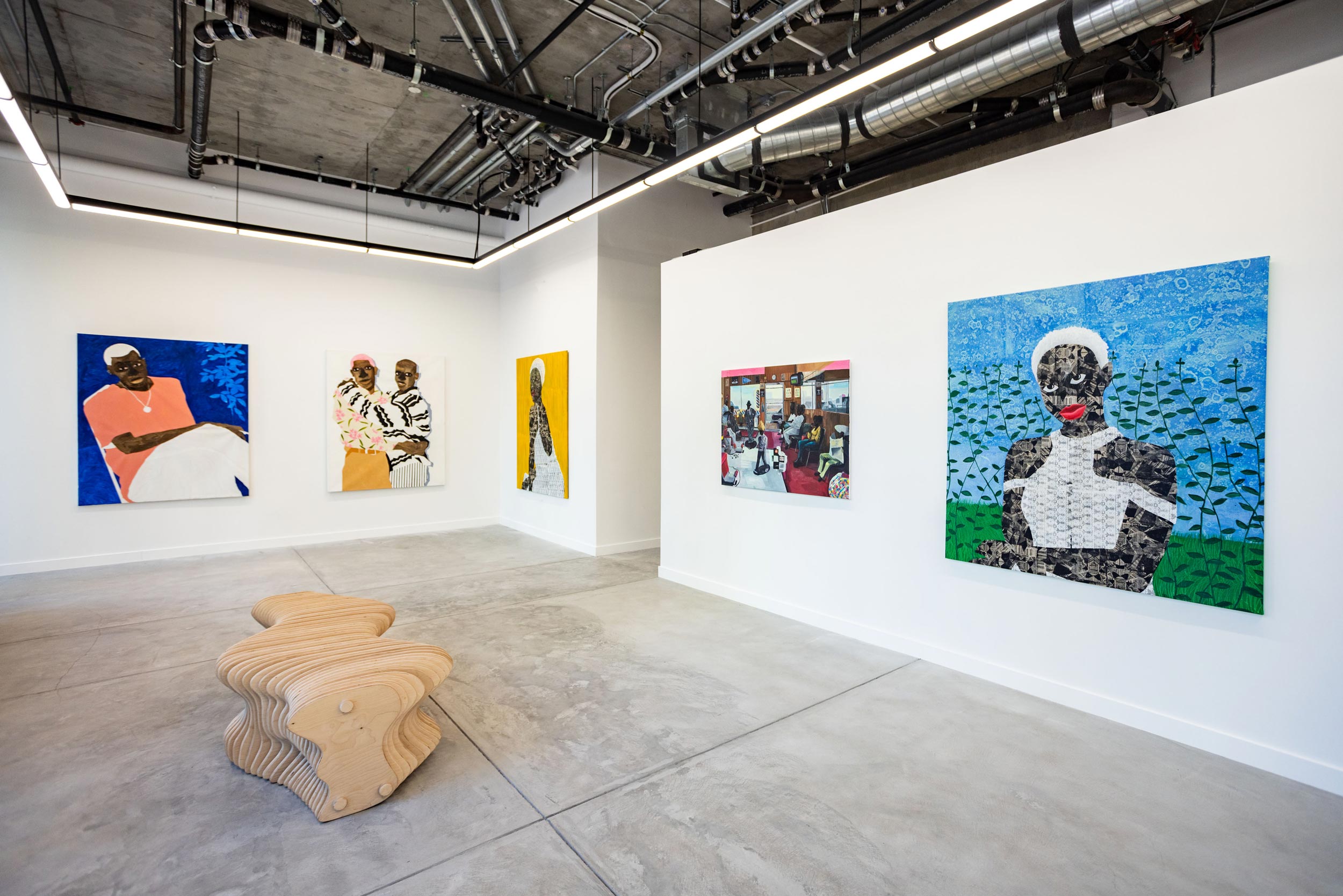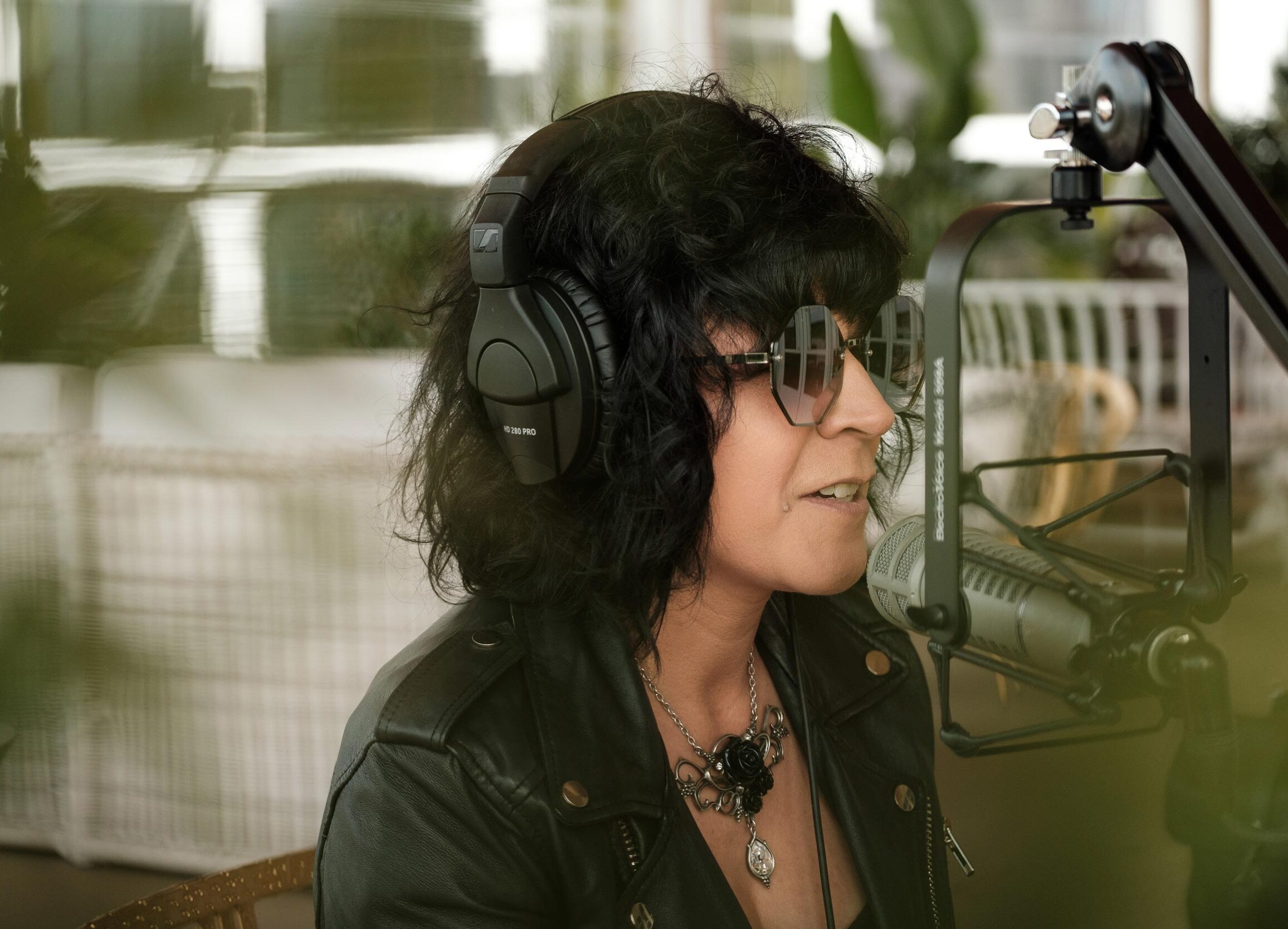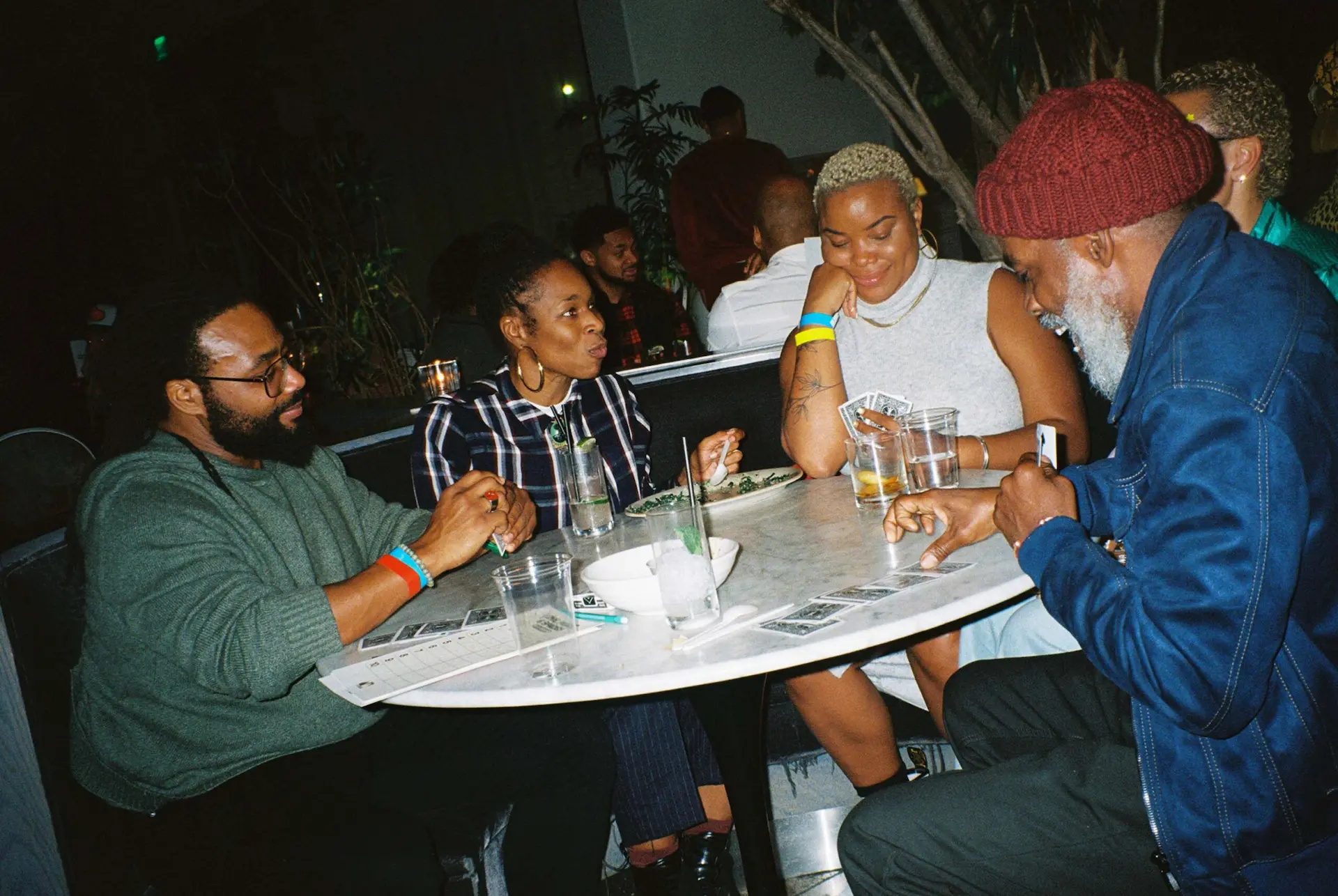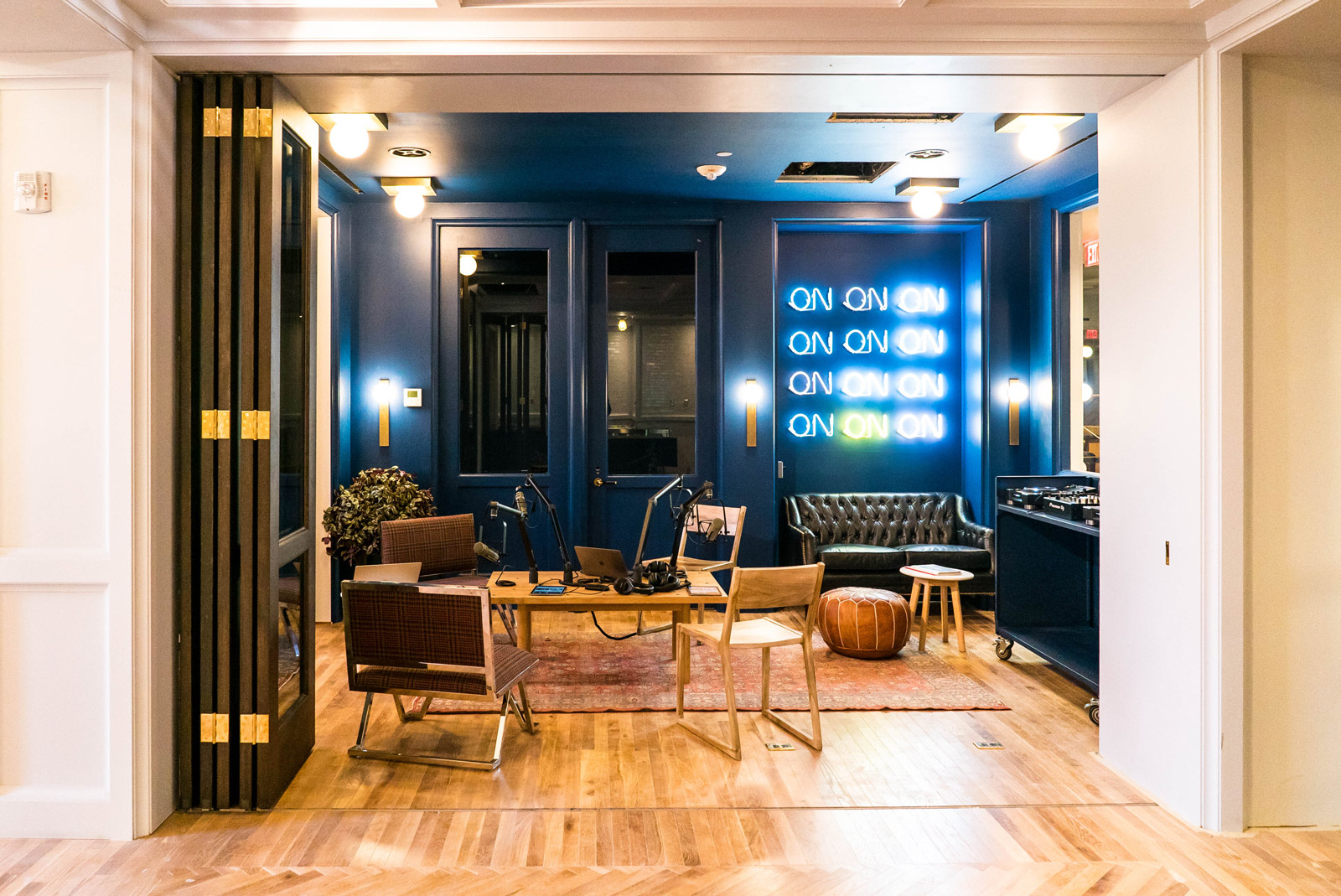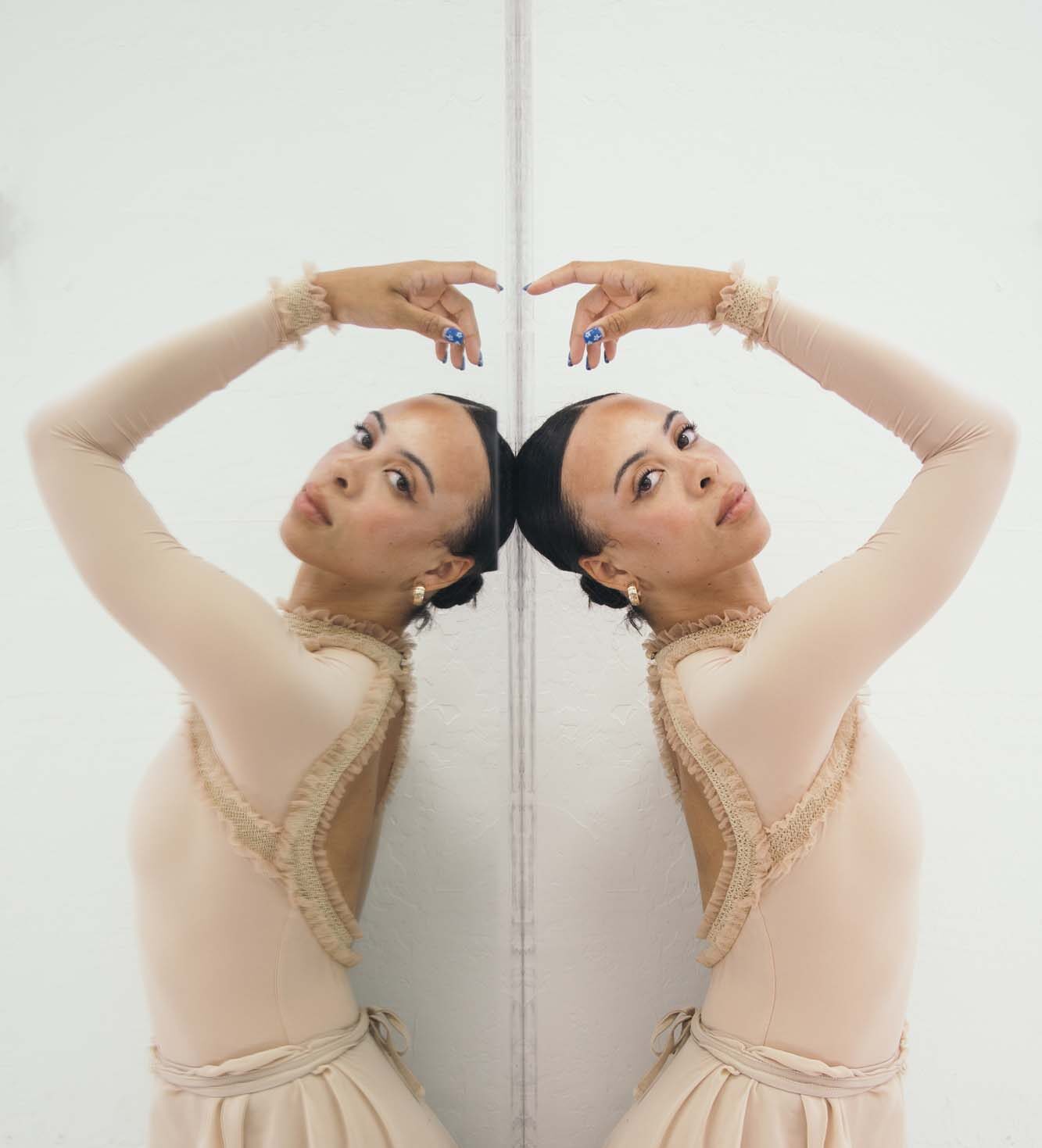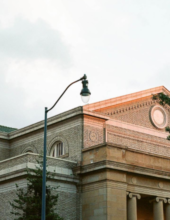Jonathan Carver Moore
Makes Space on Market
By Janelle Zara
Photos by Drew Altizer
Portrait by Kari Orvik
At the end of March, Jonathan Carver Moore opened the doors to his eponymous San Francisco gallery, an airy Market Street storefront committed to showing queer artists, women artists, and artists of color.
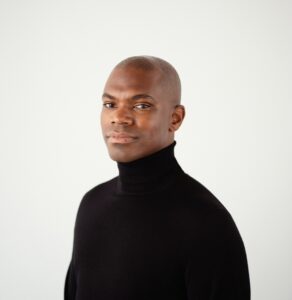
The gallerist Jonathan Carver Moore by Kari Orvik
His inaugural exhibition, “The Weight of Souls,” featured new works by Kacy Jung, a Bay Area artist who synthesizes elements of both sculpture and photography in her practice. The show featured plaster casts of the artist’s own hands, coated in bronze pigment and mounted in pairs along the gallery walls. Each pair held a sheet of chiffon printed with an image of the artist’s face, contorted in a theatrical sequence of dramatic poses, at times wrung out, ripped in half, or crumpled into a ball.
“The works take you on a journey of Kacy’s assimilation into American culture,” Carver Moore explained, dressed chicly in all black, down to his Gucci loafers. Standing in the gallery’s generous natural light, he had the slightest hoarseness in his voice, having hosted literally hundreds of guests at his opening reception the night before.
He went on to describe Jung’s trajectory, where moving from Taiwan to the US to study biomedical engineering had struck her with an acute sense of displacement and stifled creativity. She eventually abandoned her PhD program to pursue a more fulfilling career as an artist.
For Carver Moore, Jung’s work looked like nothing else he had ever seen, yet it resonated on a deeply familiar level. Each sculpture embodied a different sensation from the artist’s previous life — alienation, sadness, and frustration among them — and being both Black and gay, he recognized the underlying outsider themes in her work.
“I think anyone can relate to this,” he added, gesturing to a limp sheet of chiffon hanging from a single hand, titled Catch Me in the Sky.
Jonathan Carver Moore gallery sits on the border of SoMA and the Tenderloin, two San Francisco neighborhoods whose reputations have been maligned in the popular imagination; on one hand, you have the booming industries of tech and venture capital that eradicated the city’s creative class, and on the other, a crisis of theft and homelessness.
While these are tropes that bear elements of truth, the San Francisco of real life is very different from the one on TV. “I understand what things look like on the surface,” Carver Moore said, “but when you don’t live here, you don’t see what’s going on.”
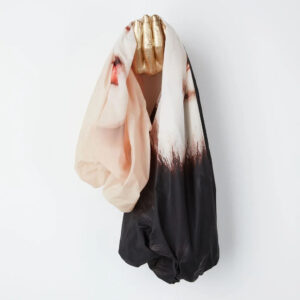
Catch Me in the Sky by Kacy Jung
A former military brat whose itinerant childhood followed his father’s Air Force career to Brussels, Manila, and beyond, Carver Moore radiates with an easy-going charisma. He speaks highly of a tight-knit community of galleries within walking distance, including Glass Rice, Micki Meng and Good Mother, and recommends a long list of hidden neighborhood gems: the Tenderloin Museum for its stewardship of queer history, Propagation for its drinks and floral decor, Saigon Sandwich for its amazing $5 banh mi.
He’s lived in the Tenderloin since he arrived in San Francisco seven years ago, loving the neighborhood’s proximity to major institutions like SFMOMA, the Asian Art Museum, and the Museum of the African Diaspora. It’s here, he says, that he found a small-town vibe in the middle of the city: “This is a neighborhood of mom and pop shops, where they know my name and I know theirs.”
As an emerging gallerist, Carver Moore’s entry into the art world was almost accidental, having been the communications manager of a local social justice nonprofit in his previous life. “It wasn’t my job at all to decorate anything,” he recalled, and yet he had taken it upon himself to hang friends’ works of art on the office walls. When various city officials and philanthropists came to the office, he turned out to be a natural art dealer. “They’d go, ‘Who’s that artist?’ And I’d say, ‘Let me put you in contact with them.’”
Carver Moore has since been an enthusiastic booster to the city’s creativity, joining the local art nonprofit Root Division as development chair and hosting mixers for artists and curators in his own apartment. “What’s cool about the mixers is that I would meet artists outside of my social circles there,” said Jung. “As a really warm-hearted person, Jonathan’s really good at putting people at ease and bringing them together.”
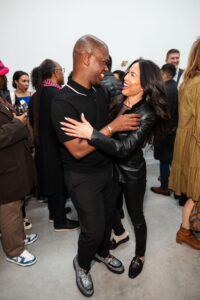
Jonathan Carver Moore and Colleen Angeles at the gallery’s opening.
Following his tenure at the nonprofit, Carver Moore worked for a year at the ICA San Francisco, when the completion of the LINE presented the opportunity to rent a storefront in the building. Both the dearth of any Black, openly gay gallerists and the opportunity to promote underrepresented artists appealed to him. “I was thinking maybe I’d have a gallery in four or five years,” he said, “but then I thought, the time is now.”
Carver Moore’s most prominent quality, said longtime friend and local curator PJ Gubatina Policarpio, is an enthusiasm for advocacy and building community. “You see someone who’s really dynamic and really fills up a room,” the curator said, “but also makes sure to share that light. He’s someone who connects the dots: There’s a genuine interest in getting to know people, especially queer artists and artists of color, and who he can introduce them to.”
So many dots have been connected that when he opened the doors on his spare, concrete storefront on a Thursday evening in the spring, an unexpected crowd of 350 or so artists, curators, museum directors, art patrons, and more formed a line down the block, dispelling any doubts as to what’s happening in San Francisco. “There’s community here,” Carver Moore said on his first official day of business. “I saw it last night.”
~
The gallery’s current show “Black As An Experience, Not As a Color” closes June 3rd, and “Sanibonani,” a group exhibition with works from Zanele Muholi and students from The Muholi Art Institute, opens June 16th.
